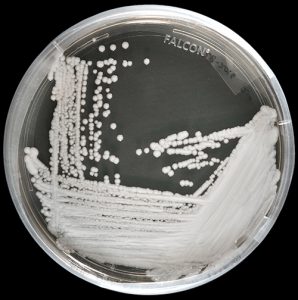Archive for May, 2017
The World Health Organization and Doctors Without Borders reported on an alarming increases in the number of cholera cases in Yemen in the past few weeks.
Wednesday, May 10th, 2017“…..The World Health Organization, the public health arm of the United Nations, reported 2,022 suspected cases of cholera and acute watery diarrhea in Yemen from April 27 to this past Sunday, including at least 34 deaths……”
https://www.youtube.com/watch?v=zoE_SIo7lSc
Five cases of botulism caused by botulinum neurotoxin type E (BoNT E) have been diagnosed in November 2016 in two countries: 3 cases in males in Germany and 2 cases in partners (one male and one female) in Spain.
Wednesday, May 10th, 2017European Food Safety Association
“…..On 22 November 2016, Germany reported two laboratory-confirmed cases of foodborne botulism BoNT -type E in adult males from two neighbouring states with onset dates in early November to the Epidemic Intelligence Information System for Food- and Waterborne Diseases and Zoonoses (EPIS-FWD). Both patients had clinical symptoms compatible with botulism and their stool samples were confirmed positive for gene-encoding BoNT E in the German Consultant Laboratory for botulism. Both patients had eaten ‘dried and salted roach’ (Rutilus rutilus). On 28 November 2016, Germany posted an alert in the Early Warning and Response System (EWRS). On 7 December, Germany updated EWRS with information on an additional case, later confirmed, from a third German state with clinical symptoms of botulism and disease onset 24 November 2016. The patient had eaten dried and salted roach (Rutilus rutilus). Analyses of faecal samples were initiated in order to verify the botulism. The three German patients have a Russian background. On 19 December 2016, Germany reported a fourth confirmed case of foodborne botulism in a female with a Kazakh background through EWRS. She had consumed dried and salted roach and fell ill on 11 December 2016. On 25 November 2016, Spain reported two probable cases of botulism in partners (one male and one female). The cases were Russian nationals with residence in Spain who consumed dried and salted fish ’Plötze Salz’ (Rutilus rutilus) and developed symptoms on 5 and 6 November 2016. The results of the clinical samples tested were negative…….”
Liberia’s Mystery Disease: Seven specimens from the deceased tested positive for Neisseria meningitis
Tuesday, May 9th, 2017A dodgy batch of smelly French cheese has been blamed for a 300-student mass food poisoning outbreak at schools in Normandy.
Tuesday, May 9th, 2017“…..The children began to suffer headaches, vomiting and stomach aches after eating the cheese at 54 different primary schools and nurseries on 27 April…..”
Examining the impact of Hurricane Sandy on the mental health and substance use of residents of the Rockaways
Monday, May 8th, 2017The lasting mental health effects of Hurricane Sandy on residents of the Rockaways
Patricia Rothenberg, BA;
Samantha M. Kerath, MS;
Bian Liu, PhD;
Emanuela Taioli, MD, PhD

Setting: Rockaways, Queens, NYC community residents.
Participants: From October 2013 to April 2015, 407 adult residents of the Rockaways completed self-report, validated measures of depression, anxiety, and post-traumatic stress symptoms as well as indicators of substance use (alcohol, illicit substance, and tobacco use) and exposure to Hurricane Sandy.
Main Outcome Measures: Depression, anxiety, post-traumatic stress, alcohol use, illicit substance use, and tobacco use.
Results: Differences in exposure scores on outcomes were compared using Wilcoxon tests. Associations between hurricane exposure (categorized into “personal” and “property” exposure) and outcomes were investigated using logistic regression, adjusting for demographic covariates, mental health history, and time since hurricane. The study participants were predominately female (57.5 percent) and black (63.9 percent) and average age was 44.7 years. Multivariable results showed that property exposure scores were positively associated with increased risks of mental health difficulties across all three mental health symptom outcomes, but not substance use. Increased personal and total exposures were also significantly associated with increased Posttraumatic Stress Disorder symptoms. Substance use variables were not significantly associated with any of the hurricane exposure indicators.
Conclusions: The present study quantifies the lasting impact that Hurricane Sandy has had on the mental health of Rockaways residents indicating the need for continued recovery efforts and increased mental health service provision in this vulnerable region.
New radiation references from the U.S. DHS
Monday, May 8th, 2017Radiation issues, “Health and Safety Planning Guide for Planners, Safety Officers, and Supervisors for Protecting Responders Following a Nuclear Detonation.
US DHS. Dec 2016
“Quick Reference Guide: Radiation Risk Information for Responders following a Nuclear Detonation.” US DHS. Dec 2016
https://www.dhs.gov/sites/default/files/publications/Quick%20Reference%20Guide%20Final.pdf
5/7/1902: Martinique’s Mount Pele begins the deadliest volcanic eruption of the 20th century.
Sunday, May 7th, 2017Candida auris: 61 cases of the fungus have been reported in the U.S. since 2013
Sunday, May 7th, 2017Candida auris is an emerging fungus that presents a serious global health threat. Healthcare facilities in several countries have reported that C. auris has caused severe illness in hospitalized patients. Some strains of Candida auris are resistant to all three major classes of antifungal drugs. This type of multidrug resistance has not been seen before in other species of Candida. Also of concern, C. auris can persist on surfaces in healthcare environments and spread between patients in healthcare facilities, unlike most other Candida species. CDC has developed Interim Recommendations(https://www.cdc.gov/fungal/diseases/candidiasis/recommendations.html) to help prevent the spread of C. auris.
C. auris is difficult to identify with standard laboratory methods and can be misidentified in labs without specific technology. CDC encourages all U.S. laboratory staff who identify C. auris strains to notify their state or local public health authorities and CDC at candidaauris@cdc.gov. Find answers to frequently asked questions about C. auris on our questions and answers page(https://www.cdc.gov/fungal/diseases/candidiasis/candida-auris-qanda.html) and in the Candida auris: Interim Recommendations(https://www.cdc.gov/fungal/diseases/candidiasis/recommendations.html).
CDC is working with state and local health departments to identify and investigate cases of C. auris. The following map displays where C. auris cases have been identified in the United States as of April 13, 2017.
Data Table

Liberia: WHO’s evidence suggests a mysterious illness that has sickened 28 people so far and killed 12 is linked to food or drink poisoning and is not a viral infection
Sunday, May 7th, 2017- The cases appeared tied to one funeral suggesting that an isolated poisoning was to blame
- WHO and medical charity Doctors Without Borders have said the warning system put in place in Liberia after the Ebola crisis prompted fast action following the recent deaths.
- The unexplained illness causes fever, vomiting, headaches and diarrhoea.




